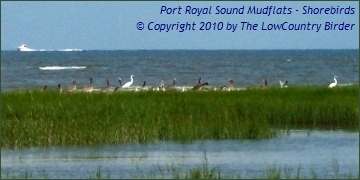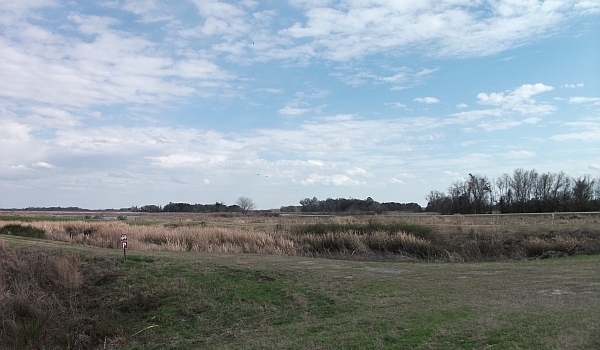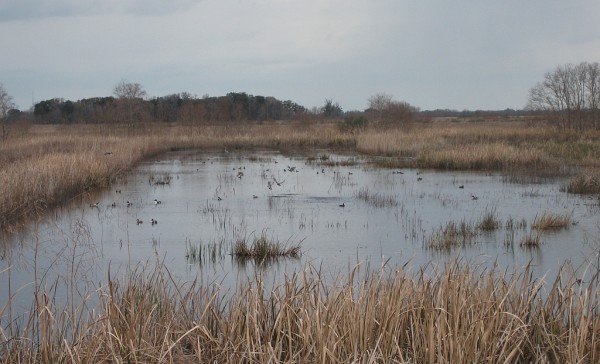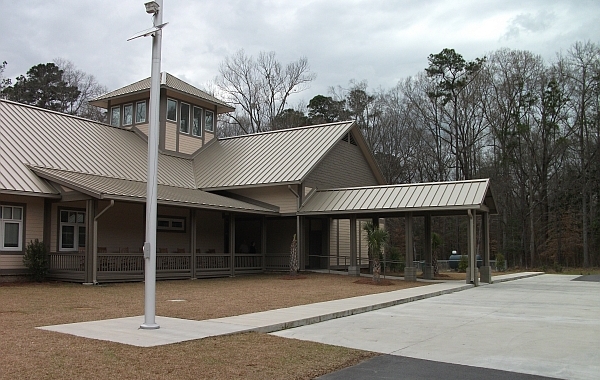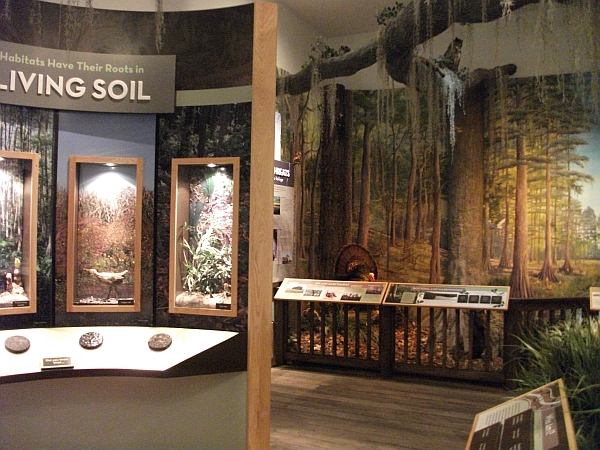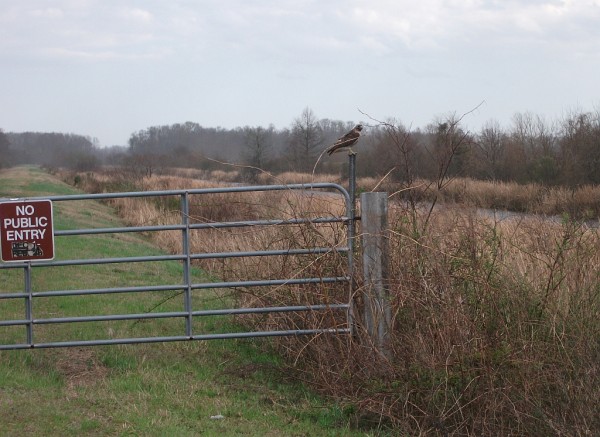Savannah NWR
The Savannah National Wildlife Refuge (NWR) lies on both the South Carolina and Georgia sides of the Savannah River just upriver from the city of Savannah, Georgia. It was established by Executive Order on April 6, 1927. The refuge is located in the heart of the Lowcountry, a band of low land bordered on the east by the Atlantic Ocean and on the west by sandhill ridges, which extends from Georgetown, South Carolina to St. Mary’s, Georgia. The refuge’s 28,168 acres include freshwater marshes, tidal rivers and creeks, and bottomland hardwoods. There is also a 3,000 acre fringe area of upland hardwoods and another 3,000 acres that form an impoundment system that is managed for migratory waterfowl and wading birds.
These freshwater dikes used to be part of the rice fields of former plantations dating back to the 1700s. The old rice levees, which were built by hand, form the basis for the current impoundment dikes. Remnants of the original rice field trunk water control structures and narrow dikes are still visible in some places. (See the News Alert below about the ongoing project to replace the old water control structures that will cause the temporary closure of Laurel Hill Drive to visitors starting June 1st!)
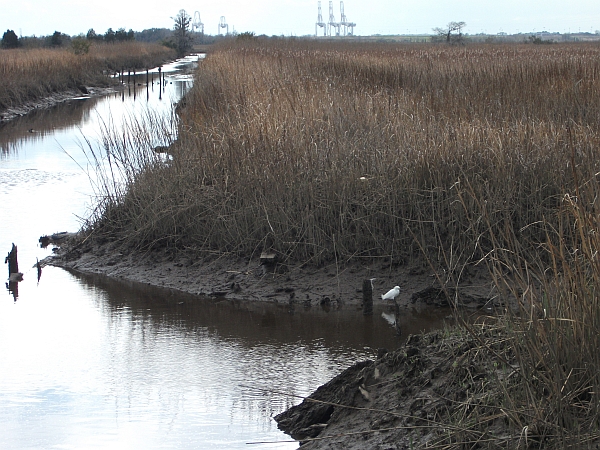
Savannah NWR - Old rice plantation waterways - notice the Snowy Egret in the foreground and the cranes at the Savannah River Terminal in the background!
Birds and Wildlife at Savannah NWR
The Savannah NWR provides a home for a large variety of wildlife including: ducks, geese, shorebirds, wading birds, and several endangered or threatened species including Wood Storks, manatees and shortnose sturgeon (an ocean-going fish that spawns in the nearby Savannah River). The refuge also provides nesting areas for Wood Ducks, Bald Eagles, Osprey, Great-horned Owls and Swallow-tailed Kites among other birds. The refuge’s location on the Atlantic Flyway enhances the variety of bird life seen within the Lowcountry. During the winter months, thousands of Blue-winged Teal, Ring-necked Ducks, Shovelers, Pintails, and many other species of ducks migrate into the area, joining resident Wood Ducks on the refuge. In the spring and fall, migrating songbirds stop by on their journey to and from their northern nesting grounds.
Motorists can drive (or bike if you’re up to the challenge!) along the Laurel Hill Wildlife Drive, off S.C. 170, which winds through the managed freshwater pools and hardwood hammocks along four miles of earthen dikes. During spring, summer and fall you will often see many alligators sunning themselves on the banks of the waterways (home to the biggest ‘gators I’ve ever seen), along with a variety of wading birds. During the winter months, you can spot a large number of waterfowl and other migratory birds in the old rice field impoundments.
How to Get to Savannah NWR
Savannah NWR is one of seven refuges administered by the Savannah Coastal Refuges Complex (get refuge Visitors info here). This chain of national wildlife refuges extends from Pinckney Island NWR near Hilton Head Island, South Carolina, to Wolf Island NWR near Darien, Georgia. In between these lie Savannah (the largest refuge in the complex), Wassaw, Tybee, Harris Neck, and Blackbeard Island refuges. Together they span a 100-mile coastline and total over 56,000 acres. The Savannah Coastal Refuges are administered from headquarters located in Savannah, Georgia.
New Visitor Center Is Open!
The new Savannah NWR Visitor Center just opened in March 2010 and is located along U.S. 17 and is 7 miles south of Hardeeville, SC or 6 miles north of Savannah, GA. It is open Monday through Saturday from 9:00 AM – 4:30 PM (it’s closed on Sundays and Federal holidays).
The center provides a very informative 11-minute video about the refuge, some excellent museum-quality exhibits, and “The Gator Hole,” a book and nature store operated by the Friends of the Savannah Coastal Wildlife Refuges. We were quite favorably impressed with it when we visited it soon after it opened – it’s well worth the time to stop by and see the video and the exhibits!
Laurel Hill Wildlife Drive – a Mecca for Birders
The Laurel Hill Wildlife Drive is located on SC 170, 2.5 miles west of the junction with U.S. Hwy 17 and 2 miles east of the city of Port Wentworth, GA. The Drive is open seven days a week during daylight hours only. You never know what you might see along the drive – we spotted a Bald Eagle and an Osprey soaring overhead at the same time when we were there in March, and later saw a Northern Harrier and a Red-tailed Hawk as well (see the hawk pictured below).
NEWS ALERT: Temporary Closure of Laurel Hill Wildlife Drive
The Laurel Hill Wildlife Drive will be temporarily closed beginning June 1, 2010 for major construction and repair of the Freshwater Diversion Canal and associated water control structures. The U.S. Army Corps of Engineers will be replacing the water control structures associated with the Freshwater Diversion Canal, which runs adjacent to the east side of the managed freshwater wetlands at the Savannah National Wildlife Refuge.
The Freshwater Diversion Canal was constructed in 1977 as mitigation for the 38’ harbor deepening of the Savannah River. Its function is to carry freshwater from the Savannah River into the refuge’s managed wetlands through a system of water control structures. Over time, the system has deteriorated to the point where it is no longer functional, and the ability to manage freshwater within the refuge has been compromised. Repairs to the system are necessary to enable the refuge to fulfill its mission of providing essential habitat for wintering waterfowl and other wildlife species.
Throughout the duration of the project, closures to various parts of the refuge will be necessary to ensure public safety and to allow the contractor sufficient space for moving and storing construction equipment and materials. This will cause the greatest impact along the Laurel Hill Wildlife Drive, which attracts over 100,000 visitors annually. You can get up-to-date information about affected areas of the refuge from the Visitor Center staff, who can also provide information on other wildlife-dependent recreation opportunities that may be available while the wildlife drive is closed. This is a three-phased project with each phase taking about 6-8 months – see the details here.
